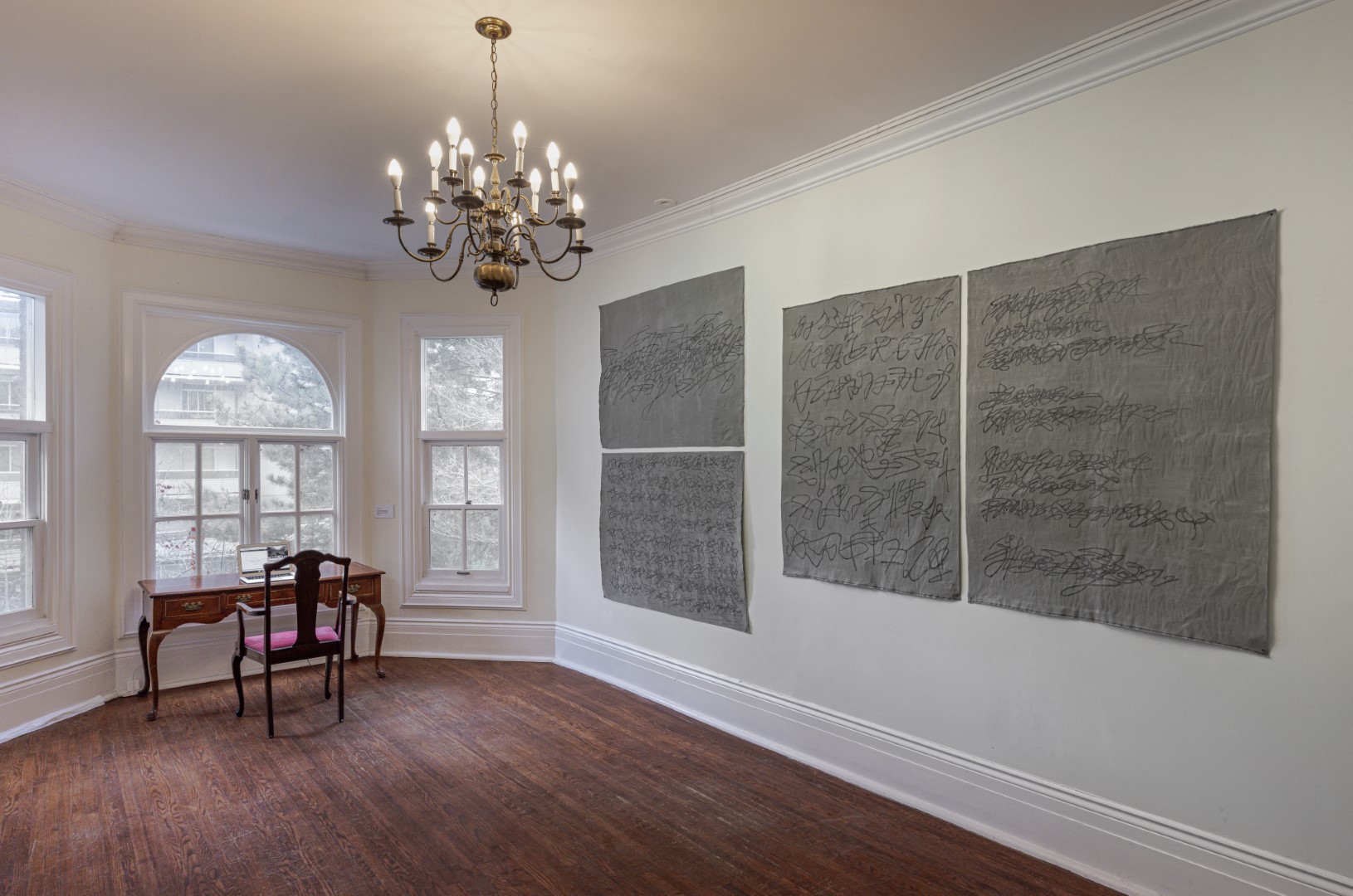Bio
Sophie Woelfling is an artist from Brooklyn, New York. Working with a range of mediums, she explores language and writing as tools of communication/deliverers of understanding—specifically when these tools/deliverers fail to fulfill their design—creating confusion rather than comprehension.
Utilizing recognizable writing conventions but obscuring or eliminating meaning and legibility, her work creates an experience of simultaneous recognition/unrecognition: a deceptive appearance of decipherability. These scripts and symbols present themselves as such, but refuse to be read—calling the experience of unknowing into investigation.
Her thesis research has centered theoretical and personal investigations into language, meaning, and the act of writing.
Artist Statement
Sophie Woelfling is an artist exploring language and writing as tools of communication/ deliverers of understanding—specifically when these tools/deliverers fail to fulfill their design—creating confusion rather than comprehension.
A hand two hundred times more agile makes use of discernibly writing-like forms, but does away with any legible semantic content, creating an experience of simultaneous recognition/unrecognition: a deceptive appearance of decipherability. Page-like panels of linen reference the conventional holders of writing, but deviate materially. Scripts and symbols present themselves as such, but refuse to be read—calling the inability to comprehend into investigation.
The starting point for this project was the artist’s personal relationship with these tools of communication. Language fails. It’s a sieve we sift our formless experience through, into which not all fits. This deficiency renders things stuck: incommunicable—sometimes lost. Some things are untranslatable. Some things are impossible to grasp in the first place, much less to mold into words. These iterative works represent that which resists being made sense of—what comes and goes too quickly to identify, is too microscopic to access, or too large to conceive of all at once.
The title is derived from Henri Michaux’s Thousand Times Broken:“A hand two hundred times more agile than the human hand would not suffice for the task of following the accelerated course of the inexhaustible spectacle. And it is out of the question to do more than follow. Here one cannot seize a thought, a term, or a figure, to work with it, to draw inspiration from it, or to improvise on it. All power over them is lost. Their speed, their independence, comes at that price.”






